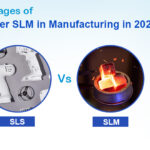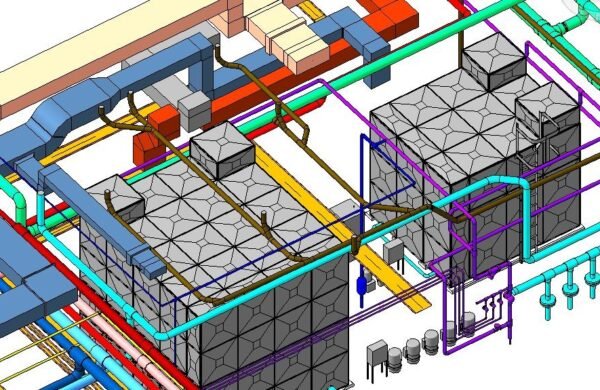In the construction industry, detailed drawings play a vital role in ensuring smooth project execution. Two key types of drawings that professionals rely on are shop drawings vs. construction drawings. While both serve essential purposes, they differ in scope, creators, and level of detail.
A shop drawing vs. construction drawing comparison is crucial for understanding how each contributes to the overall building process. Construction drawings provide an overall blueprint of the project, while shop drawings focus on specific details required for manufacturing and installation.
In this blog, we’ll break down the differences between shop drawings and construction drawings, their importance, and how leading companies like Monarch Innovation a renowned engineering & designing company leverage these drawings for efficient project execution.
What Are Construction Drawings?
Construction drawings are the primary blueprints used to design and execute a building designs. Created by architects and engineers, these drawings provide a comprehensive overview of the project, guiding contractors and builders throughout the construction process.
Key Features of Construction Drawings:
- Project-wide scope: Construction drawings cover the entire building project, from site plans to floor layouts and MEP (Mechanical, Electrical, and Plumbing) systems.
- Regulatory compliance: These drawings ensure adherence to building codes, safety regulations, and zoning laws.
- Coordination among disciplines: Architectural, structural, and MEP teams rely on these drawings for seamless integration of their designs.
- Permitting and approvals: Construction drawings are submitted for approval by local authorities before the project begins.
Types of Construction Drawings
1. Architectural Drawings – Floor plans, elevations, and section views.
2. Structural Drawings – Details of columns, beams, and load-bearing elements.
3. Electrical Drawings – Wiring, circuit diagrams, and lighting layouts.
4. Mechanical Drawings – HVAC, ventilation, and equipment layouts.
5. Plumbing Drawings – Water supply, drainage, and sanitation systems.
6. As-Built Drawings – Final documentation incorporating any on-site modifications.
These types of construction drawings form the backbone of every successful building project.
What Are Shop Drawings?
Unlike construction drawings, shop drawings focus on individual components rather than the entire structure. Created by fabricators, manufacturers, and speciality contractors, shop drawings provide detailed fabrication and installation guidelines for specific building elements.
Key Features of Shop Drawings:
- Component-specific details: Shop drawings zoom in on elements like steel structures, HVAC ducts, millwork, and prefabricated materials.
- Manufacturer-specific designs: They translate general design intent into precise fabrication instructions, ensuring compatibility with manufacturer capabilities.
- Quality control: Shop drawings help detect design discrepancies early, reducing errors in material production and installation.
- Approval process: These drawings must be reviewed and approved by architects and engineers before production begins.
Examples of Shop Drawings
- Steel fabrication drawings – Detailed dimensions, welding specifications, and connection details.
- Millwork drawings – Custom cabinetry, furniture, and woodwork fabrication details.
- Precast concrete drawings – Structural components such as beams, columns, and panels.
- HVAC and ductwork drawings – Ventilation layouts and air distribution systems.
Key Differences Between Shop Drawings and Construction Drawings
| Feature | Construction Drawings | Shop Drawings |
| Purpose | Guides overall project design and execution | Details component fabrication and assembly |
| Creator | Architects and engineers | Fabricators, manufacturers, and contractors |
| Scope | Entire building structure | Individual building components |
| Detail Level | General dimensions and layout | Precise measurements, materials, and connections |
| Approval Process | Used for regulatory approvals and permitting | Requires engineer and architect approval before production |
How Monarch Innovation Enhances Construction & Shop Drawings
As a leading engineering & designing company, Monarch Innovation specializes in creating high-quality shop drawings vs construction drawings that streamline fabrication, installation, and project execution. With expertise in CAD drafting, BIM modeling, and structural detailing, we ensure that clients receive error-free and compliant documentation for their construction projects.
Why Choose Us?
- Expertise in multiple industries – Architecture, manufacturing, and infrastructure projects.
- Advanced CAD and BIM solutions – Ensuring precision and seamless project integration.
- Compliance with international standards – Delivering drawings that meet global regulatory requirements.
Why Both Are Crucial
Both shop drawings and construction drawings serve distinct but complementary roles in the building process. While construction drawings set the foundation, shop drawings refine the execution, ensuring that every element is built to exact specifications.
Key Benefits of Combining Both:
- Improved coordination between teams – Reduces conflicts between design and fabrication.
- Enhanced accuracy in manufacturing – Minimizes material waste and costly rework.
- Faster project timelines – Clear documentation leads to efficient execution and fewer delays.
- Better quality control – Ensures compliance with architectural and engineering standards.
Conclusion
Understanding shop drawings vs. construction drawings is vital for seamless project execution. While construction drawings set the blueprint, shop drawings and as-built drawings bring components to life with precision. Both are essential in ensuring accuracy, efficiency, and compliance in construction projects. Partnering with experts like Monarch Innovation ensures high-quality documentation that meets industry standards and enhances project success.
Frequently Asked Questions (FAQs)
1. What is the difference between a shop drawing and a construction drawing?
Construction drawings provide overall project guidelines, while shop drawings focus on fabrication and assembly details.
2. What are the three types of construction drawings?
The three main types of construction drawings are:
1. Shop Drawings – These detailed drawings are created by contractors, fabricators, or manufacturers to illustrate how specific components will be manufactured, assembled, and installed. They ensure precision in fabrication and compliance with design specifications.
2. As-Built Drawings – These revised drawings reflect any modifications made during construction. They document the final structure, including deviations from the original plans, and are essential for maintenance, renovations, and future projects.
3. Construction Drawings – Also known as working drawings, these comprehensive plans include architectural, structural, electrical, and mechanical details. They serve as the official guide for builders, ensuring accurate execution of the project.
Understanding these three types of construction drawings is crucial for smooth project execution, accuracy, and compliance with industry standards.
3. What is the difference between shop drawings and manufacturing drawings?
While both shop drawings and manufacturing drawings are essential in construction and fabrication, they serve different purposes:
1. Shop Drawings – These are detailed drawings used in construction projects to show how components will be fabricated, assembled, and installed. They focus on the integration of parts within the overall structure, ensuring compliance with design specifications.
2. Manufacturing Drawings – These technical drawings are used in the production process to guide the manufacturing of individual components. They include precise dimensions, materials, tolerances, and assembly instructions required for mass production.





